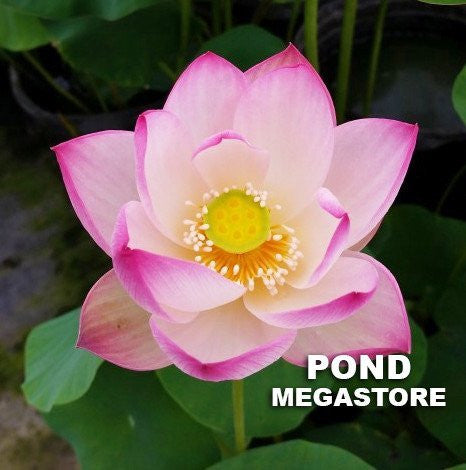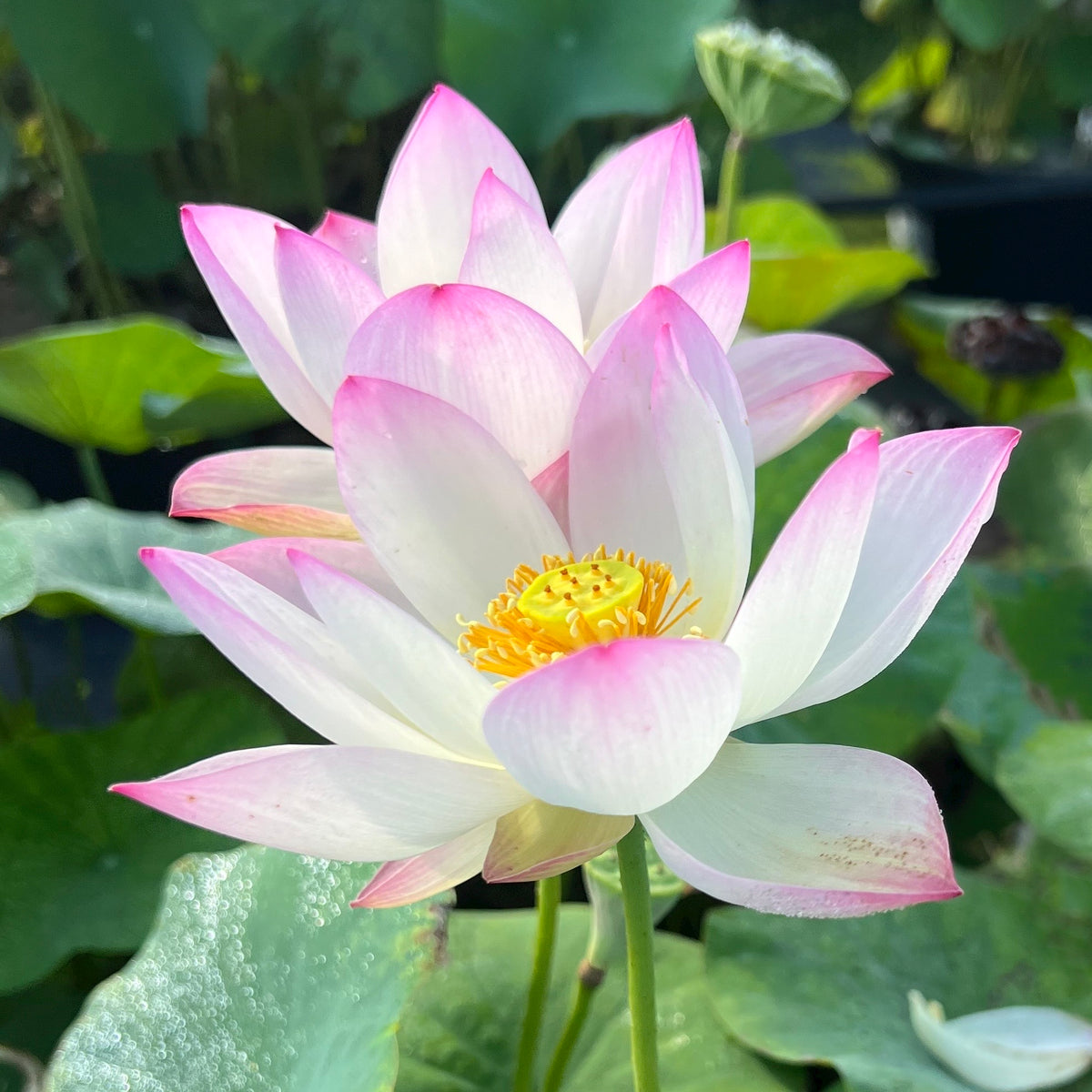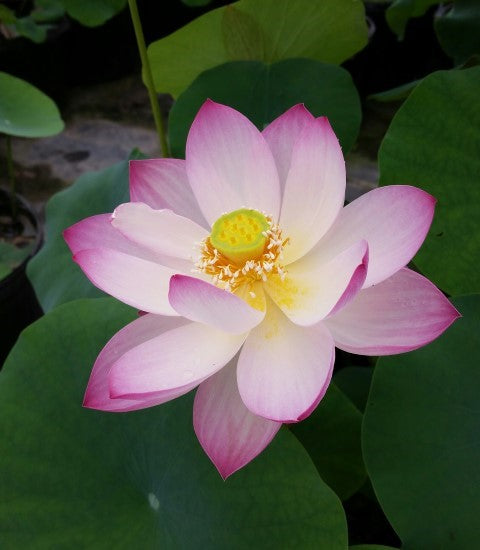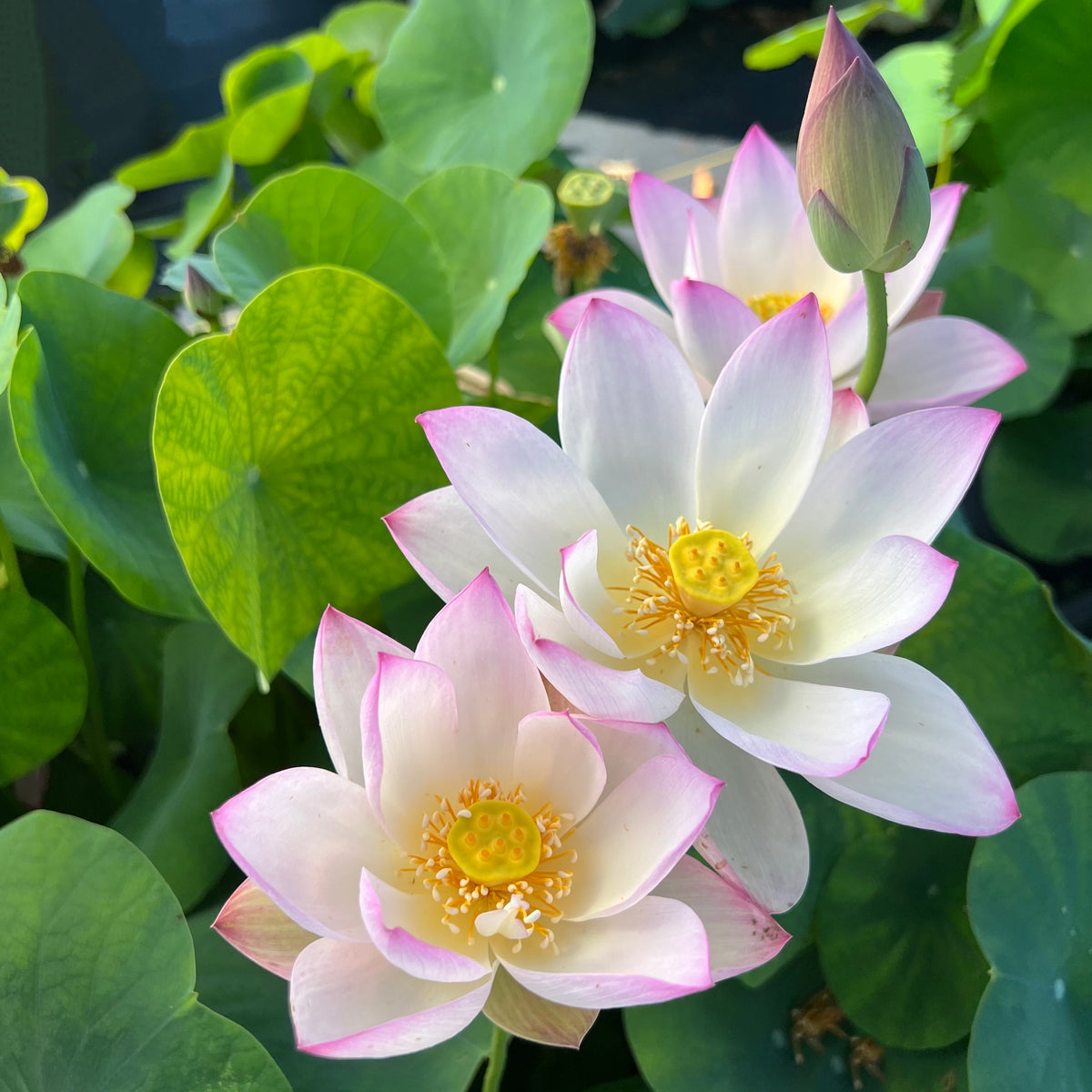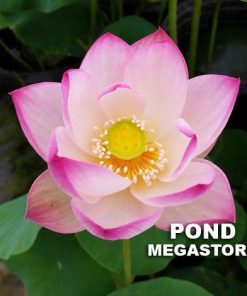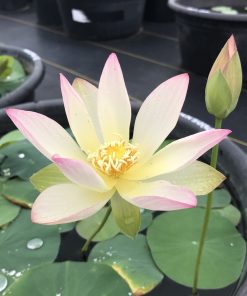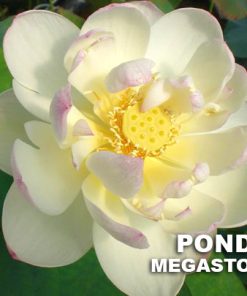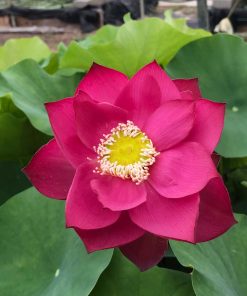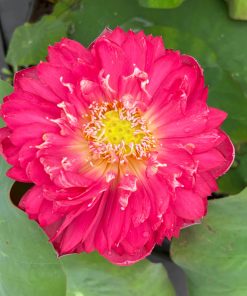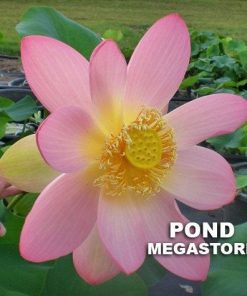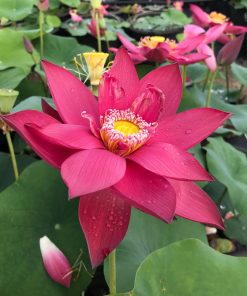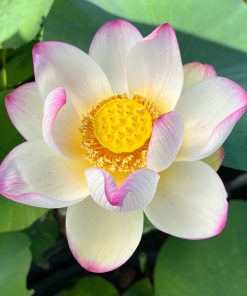Sing Birdie Sing Lotus Bowl-Dwarf / Early Bloomer! Ten Mile Creek Nursery
$ 55,00 $ 27,50
Sing Birdie Sing Lotus
Plant description
Sing Birdie Sing Lotus is a small lotus with classic, white, single petal flowers. Sing Birdie Sing Lotus gets the WOW FACTOR from the stunning violet-pink outer edges and petal tips! Sunny-yellow receptacles and emerald-green foliage complement this lotus nicely! When grown as a DWARF variety, SING BIRDIE SING grows to 2 feet tall (Sing Birdie Sing may also be grown as a Micro Lotus or Exquisite of Bowl lotus–simply grow your lotus in a smaller container) Sing Birdie Sing Lotus looks beautiful when placed in wide bowls placed in sunny locations on your deck, yard or patio!
Sing Birdie Sing Lotus is always a CUSTOMER FAVORITE!
Dwarf-Exquisite of Bowl-Micro/Versicolor/Single-Petal
Planting instructions
Plant your Sing Birdie Sing Lotus in a wide (14 – 20 inches in diameter) container using loam soil. Fill your container 2/3 full with loam soil. Dig a shallow trench in the surface of the soil. Gently place your lotus tuber in the trench, being careful not to damage the growth tips. Cover all but the growth tips with an inch or two of soil. Gently add 2 – 4 inches of water above the soil in the container. Place your lotus where it will receive at least 8+ hours of sunlight each day, outdoors. In a week or two you should have coin leaves on the surface of the water. A week or so after that you should have aerial leaves growing out of the water.
Fertilizing Instructions
Fertilize once you have two standing leaves growing out of the water. Fertilize with Waterlily World Fertilizer Tabs each month, throughout the growing/blooming season, (June through September).
What Is Loam Soil?
Loam soil is a good mixture of Topsoil and Sand
If you are lucky enough to have good topsoil in your backyard, by all means, use your topsoil. All you will have to do is add fertilizer. If you are not so lucky–and your backyard is sand or heavy red or yellow clay, you can mix up a batch of loam soil.
You can create your own loam soil by mixing these two ingredients together
- 2/3 Inorganic Topsoil (Little or no organic material added)
- 1/3 Pool Filter Sand
Mix together thoroughly with a little water. Your soil should clump when squeezed. If your soil is mixed properly, it will not muddy your pond water.
You can purchase inexpensive bags of inexpensive / poor Topsoil at Lowes or Home-Depot. Good soil clumps together as a ball in your hand with only a little moisture.
Don’t buy brands like Scott’s or Miracle-Gro, as they will contain too much organic matter that can foul your water. Buy an unbranded bag of topsoil instead.
You can purchase Pool Filter Sand at any store that sells pool supplies.
Loam soil is well suited for all aquatic plants (except oxygenators). Oxygenators rarely need to be planted, just anchored in the substrate or in a container filled with sand or 1/8 inch pea gravel.
Sand holds little water but does allow for aeration and drainage.
Some DO’s and DON’TS regarding Aquatic Planting Soil
DO NOT use potting soils ( as they are too light and will float right out of the pot). Potting Soil has organic material that will rot and foul your water!
DO NOT add too much composted material (as it is too rich in organic matter and it will ferment underwater and destroy the ecology of your pond).
DO NOT use 100% calcined clay as there is no nutritional value in calcined clay.
DO NOT add rocks, stones or pebbles to the top of your planting container as this will inhibit the growth of your plants. Plants do not grow in rocks and stones in nature!
DO NOT purchase API Aquatic Planting Media or Microbe-lift Aquatic Planting Media as these products are NOT suitable for waterlilies, lotus or most other pond plants. They are suitable for submerged grasses ONLY!
Reviews
Speedy Delivery and Professional Packaging
We can offer a variety of shipping options due to our long-term relationship with UPS FedEx DHL. Our warehouse staff are highly trained and will pack the items according to our exact and precise specifications. Your products will be subjected to an extensive inspection and be securely packaged before being delivered. We ship to hundreds of thousands of customers daily across various countries. This is an indication of our determination to become the largest online retailer worldwide. Warehouses and distribution centres can be located in Europe as well as in the USA.
Orders with more than one item are assigned processing periods according to each item.
Prior to shipment, we examine the items ordered carefully before shipping. Most orders are shipped within 48 hours. It is expected that delivery will take between 3 and 7 days.
Returns
We do not manage the stock in our factory and warehouse. So the actual stock may change at any time. Please be aware that it's possible that your order will run out of stock even after you have made the order.
Our policy runs for a period of 30 days. If thirty days have passed from the date you purchased the item, we cannot provide a refund or exchange.
The item must not be used, and it must be in the original packaging. You must have the item in the original packaging.
